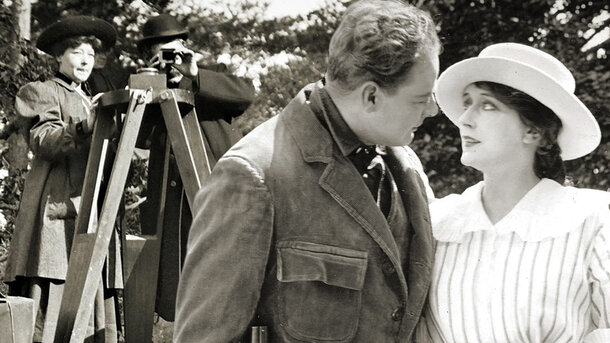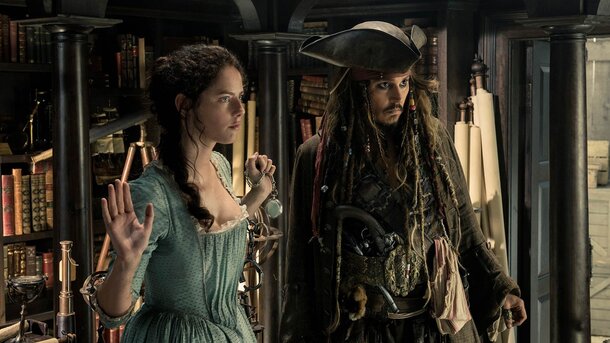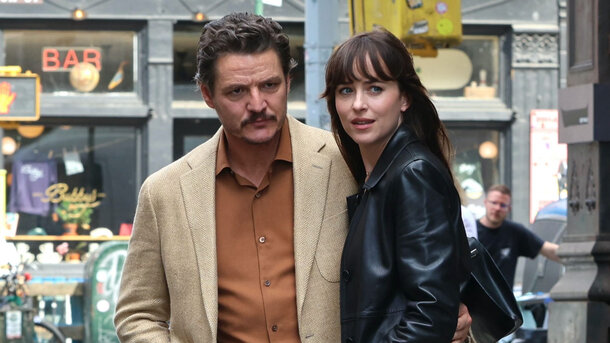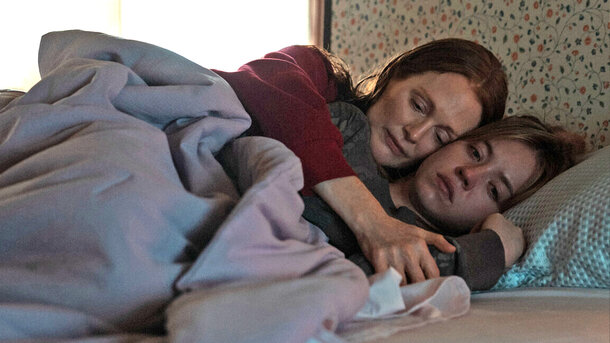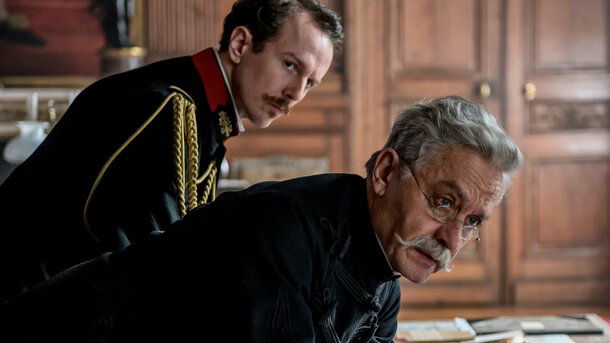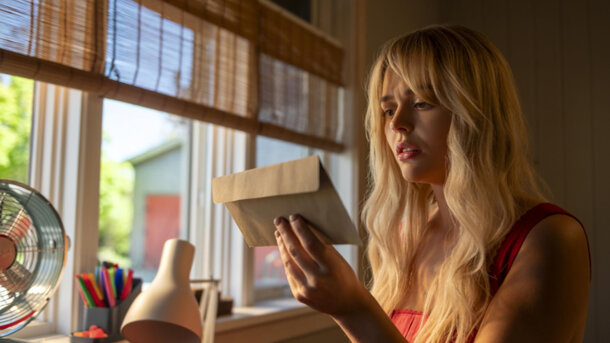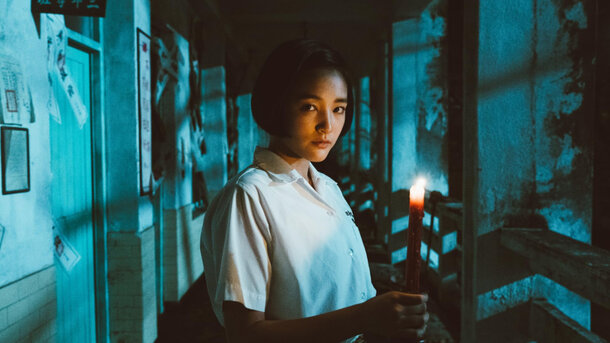On March 22, 1895, brothers Louis and Auguste Lumiere held the first ever film screening in Paris - so far only for a small circle ( publicly cinematograph was introduced 9 months later. First official screening happened December 28 ,1895) to demonstrate to colleagues the newly created cinematograph camera and the minute-long chronicle film Exit of workers from the factory shot at Lumiere’s factory. The event was attended by the bright minds of the industry: scientists, inventors, entrepreneurs. Among them were future film pioneers Leon Gaumont and his young stenographer Alice Guy. Gaumont was engaged in the sale of optical and photographic devices, so he perceived the cinematograph as a potential gold mine, while the girl was interested in cinema as a good way to tell stories.
Three months after the presentation of cinematography, Leon Gaumont created his own Gaumont film company. He acquired a patent for a chronophotographic apparatus, improved it and began to produce. And in order to show the audience what the camera is capable of, he opened a laboratory for shooting demonstration videos. These were short chronicle films that came with the equipment. They recorded important city events and everyday scenes from life. Watching the production of these tapes, Alice Guy realized that something more interesting could be done with the camera, and volunteered to shoot several staged scenes for the company. The boss considered her offer "stupid" and "girly", but agreed on the condition that the new hobby would not interfere with her office work.
In 1896, Guy began shooting the first minute-long film, The Cabbage Fairy, about a young girl who raises children in cabbage. An artist made a painted backdrop, a carpenter cut beds out of wood, and when all this was placed in front of the camera, a narrative film era began at Gaumont, and Alice Guy became the first female director in history.
Her films were warmly welcomed by the public, so Leon appointed her to be a director of the company. In this role, she manifested herself in different ways: sometimes as the author of humorous stunt films typical for time (with no less humorous titles like The Villainy of the Rabbit's Head or Epileptic Mattress), and sometimes as a director who wasn’t afraid to experiment. Her most daring work was the film The Birth, Life and Death of Christ (1906) based on the Gospel.
In the era of early cinema, stories about the life and teachings of Christ were often screened, and it was customary to shoot them using a planar composition so that the film image was like a "living" postcard or a moving picture in the style of the artist Jacques Dare. The directors worked according to the scheme "one frame - one iconographic plot" (the birth of Christ, etc.) The characters were distributed in the frame similar to how it looks in paintings, and froze in recognizable poses. This approach can be seen, for example, in the film The Life and Passion of Jesus Christ (1903) by the outstanding director of that time Ferdinand Zekka.
Alice Guy shot differently - she moved away from "postcard" style, turning the mise-en-scene (the location of the actors in the frame) into depth, which at that time looked unusual. During her ten years as chief director (1897-1907), Alice Guy developed a line of genres for Gaumont, produced hundreds synchronized sound films and mentored a successor, Louis Feyade - on her recommendation, this director became the artistic director of the studio and in the 1910’s shot the cult series Fantomas, Vampires and Judex.
In 1907, when Alice Guy was thirty-four, she married her cameraman Herbert Blaché and left France with him, opening the American period of her biography (1907-1922). Her name was Madame Blaché now. Her husband was in charge of Gaumont's New York office, and she was raising their daughter. But she soon got bored with the role of wife and mother, so in 1910 Guy opened the Solax studio (the first film company in history with a woman in charge!).
Her business quickly became successful: the team of directors produced three films a week, and Madame Blaché herself earned an income of 50-60 thousand dollars a year (about a million dollars by today's standards). In 1913 Alice Guy-Blaché made her husband a president of Solax ,hoping that this would give her more time and opportunities for creativity, but this decision costed her the company. In a rush to put himself in the foreground, Herbert Blaché created his own studio Blaché Features, using the base of actors his wife created.
At the same time, Solax's business deteriorated steadily. Alice continued to dream, but over the years her tapes increasingly seemed outdated against the large and complex films like Intolerance (1916) David Wark Griffith. The crisis in her relationship with her husband overlapped with the crisis of the First World War, and all this eventually led to the bankruptcy of Solax. Alice Guy shot her last film,Tarnished Reputation, in 1920, and in 1922 she divorced and returned to France, where she could not even get a job as a stenographer. On top of everything else, the director found that all her previous achievements had been forgotten or attributed to colleagues (including her successor Louis Feyade), and the films (of which she shot about a thousand ) were mostly lost. Alice Guy devoted the rest of her life to finding them.
The work of the first female director began to be rediscovered and mastered only in the second half of the twentieth century. In 1963, film historian Victor Bashi did a series of interviews with her. In 1986, her memoirs "The Memoirs of Alice Guy Blaché" were published. In 2002, Alison McMahan released a monograph about Alice Guy-Blaché, Lost Visionary of the Cinema. In the late 1990s, a junk dealer in the west of France found old celluloid films with her films, and in 2018, a documentary film was shot about the pioneer of cinema, Be Natural: The Untold Story of Alice Guy-Blaché.
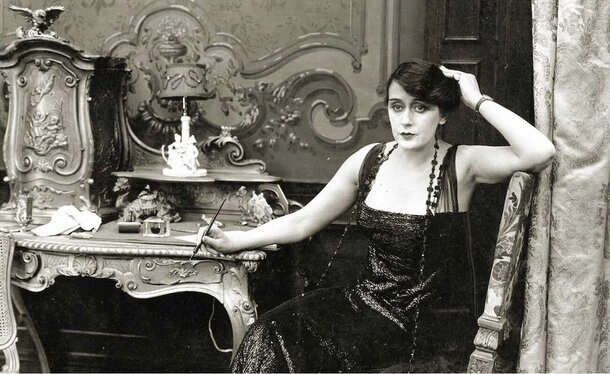
Key Points About Alice Guy Blaché :
Pioneering Work: Alice Guy Blaché made her first film, La Fée aux Choux (The Cabbage Fairy), in 1896, which is considered one of the first narrative films ever made. This short film featured a fairy bringing babies from cabbages and showcased her innovative storytelling.
Innovative Techniques: She was known for her experimentation with various cinematic techniques, including color tinting and early special effects. Blaché often incorporated sound into her films before it became standard.
First Feature-Length Film: Blaché is credited with directing one of the first feature-length films, La Vie du Christ (The Life of Christ), released in 1906. This film set a precedent for longer storytelling in cinema.
Establishment of Production Companies: In 1910, she established her own production company, Solax Studios, in the United States, where she produced over 100 films, ranging from silent shorts to longer features.
Advocacy for Women in Film: Blaché's contributions helped pave the way for women in the film industry, as she fought against the prevailing notion that filmmaking was solely a male domain.
Legacy: Despite her significant contributions, Alice Guy Blaché's work was often overlooked for decades. However, in recent years, there has been a resurgence of interest in her life and films, leading to renewed recognition of her pioneering role in cinema.
Alice Guy Blaché's legacy continues to inspire filmmakers and serves as a reminder of the critical role women have played in the history of film. Her story highlights the importance of preserving and celebrating the contributions of early female filmmakers.
